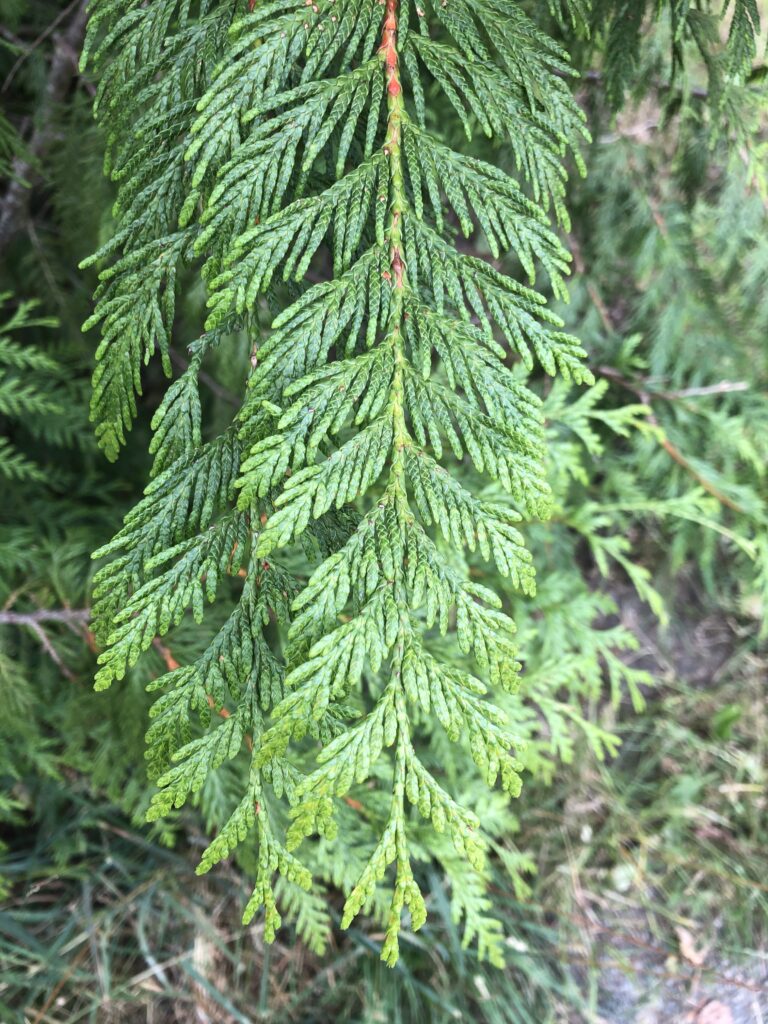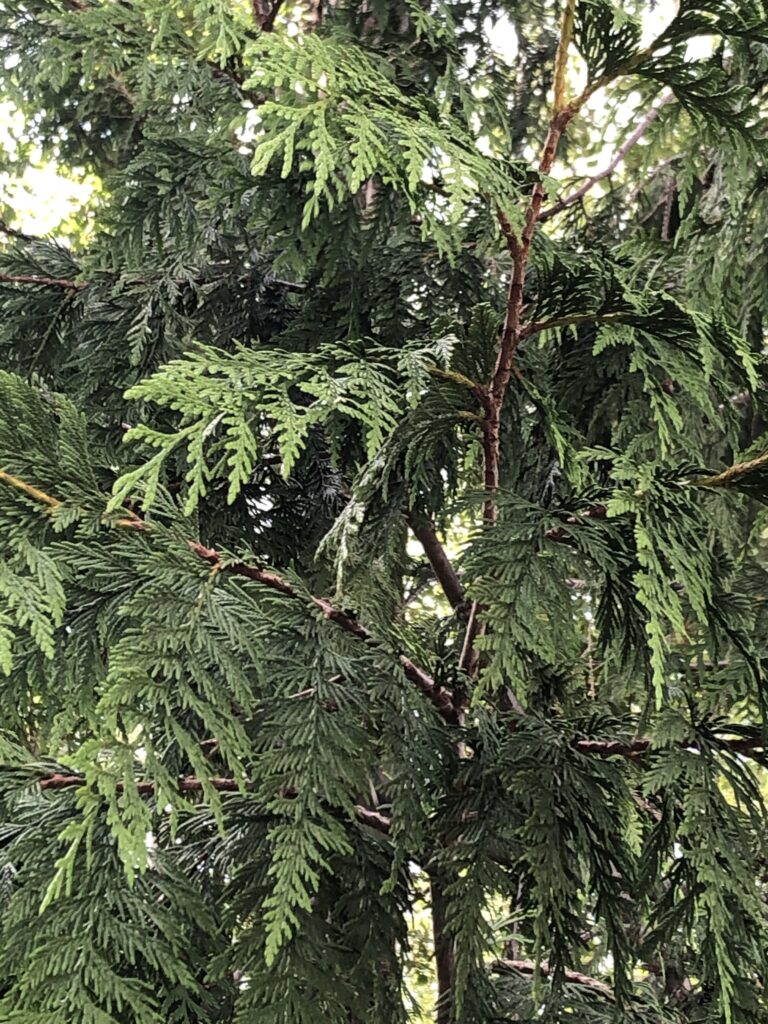Western red cedar (Thuja plicata)

Western red cedar is a native coniferous tree with fibrous red bark and flat, scale-like leaves. It is also the provincial tree of BC. Red cedar trees generally live in damp, shaded forest areas throughout the Pacific Northwest. They can grow up to 70 meters tall, and can live for over 1000 years.

Western red cedar is incredibly important to many First Nations communities on the West Coast. The wood is lightweight and easy to carve. It is also rot-resistant, due to the production of a natural fungicide called thujaplicin. Because of this, it has been used to make an incredible variety of items including canoes, totem poles, dishes, masks, cradles, and caskets. The fibrous bark was also used to make baskets, rope, and clothing. Due to its role in so many aspects of life for aboriginal communities, the western red cedar is sometimes called the “tree of life”.

Western red cedar trees also have a very important ecological role in the old-growth forest ecosystems of BC. The leaves of red cedar have high levels of calcium, and fallen leaves supply calcium to the soil. This is important because other plant species require calcium for growth. Also, since cedar trees are resistant to rot, dead trees (called snags) will remain standing for centuries. Snags are often called “wildlife trees”, because they provide habitat for many species of birds, bats, small mammals, insects, and fungi. Some ancient cedar trees have hollow trunks, which provide dens for hibernating bears.
For more information, visit Native Plants PNW or E-Flora BC.


